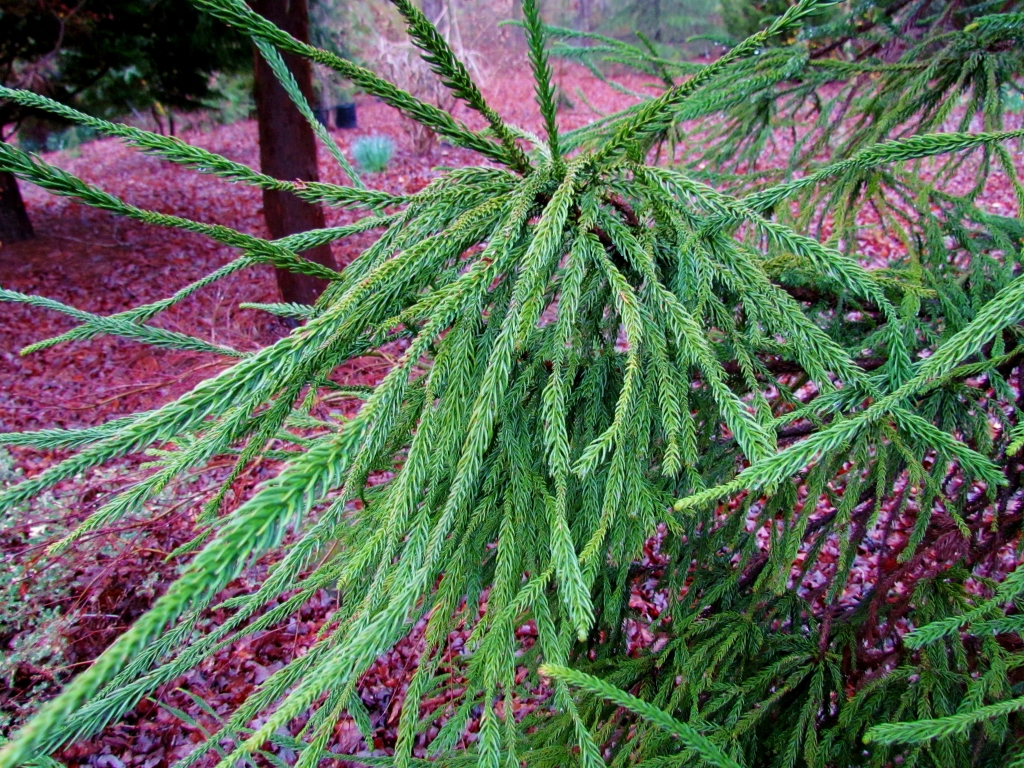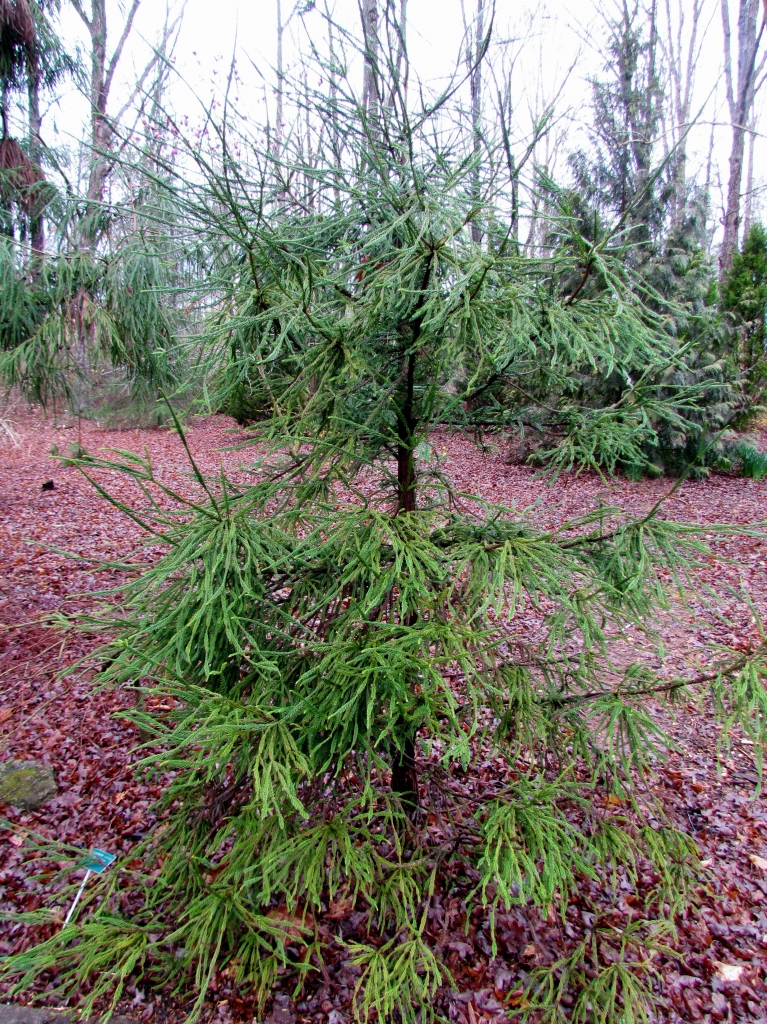Synonyms include 'Enko' and 'Enko-sugi,' which are very likely the original Japanese names for this cultivar.
Cryptomeria japonica 'Araucarioides' is an irregular, broadly conical tree form of Japanese cedar with very long, spreading, drooping and snake-like branchlets, growing almost with absence of side-branchlets. Needles are medium green in color and adpressed against the branches. They are shorter and thicker than those typical of the species. Typical rate of growth in most areas is 10 to 12 inches (25 - 30 cm) a year resulting an a bizarre specimen-tree 10 feet (2.5 - 3 m) tall by 5 feet (1.5 m) wide after 10 years in the landscape.
This is an old cultivar that originated in Japan. Noted German botanist P.F. von Siebold (1796 - 1866) imported the plant from Japan to Leiden, The Netherlands in 1859.
Humphrey Welch and Gordon Haddow, wrote in 1993 in The World Checklist of Conifers, "we consider that all of the similar mutations that have been named over the years, ('Athrotaxoides,' 'Kewensis,' 'Mucronata,' 'Selaginioides,' 'Viminalis,' 'Virgata,' etc.) to be so mixed that it would be impossible to disentangle them.
Auders & Spicer in RHS Encyclopedia of Conifers do not necessarily agree with this statement, nor do the editors of this database, but nonetheless, conifer enthusiasts should proceed with caution.


